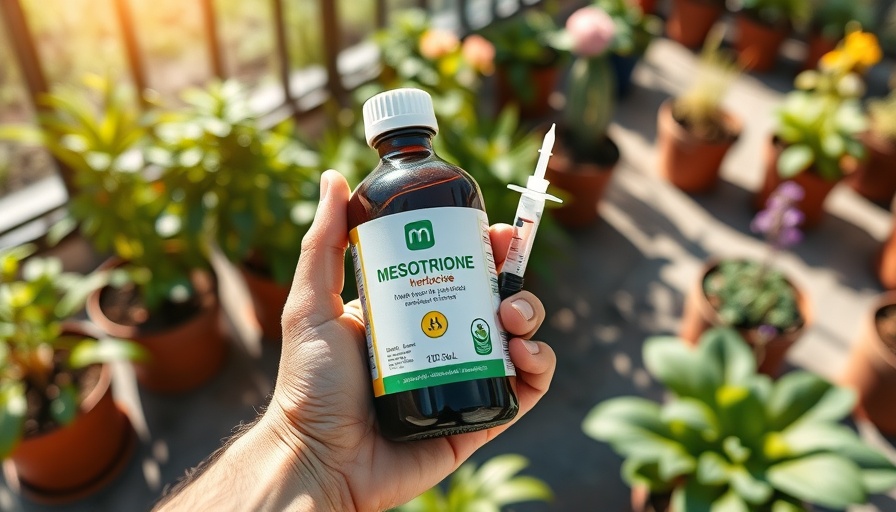
Why Understanding Winter Fungus is Crucial for Florida Homeowners
Florida's warm climate may lure many into a false sense of security regarding lawn care during the winter months. However, winter fungi such as large patch fungus can wreak havoc on lawns, especially for homeowners with St. Augustine grass and zoysia. The fungal patches often emerge in irregular shapes, usually following the contours of lawn watering patterns, presenting an unsightly orange or pink hue. For homeowners invested in maintaining their lawns, recognizing these signs is crucial for ensuring a vibrant yard come spring.
Understanding Growth and Recovery: The Science behind Lawn Care
Despite the alarm bells a fungal infection may ring, applying fungicides during the cooler months could compound the problem. In fact, fungicides serve as growth regulators, slowing down not just the spread of the fungus but also the lawn's natural growth rate. With winter days growing shorter and temperatures dropping, it's vital to consider how stressed grass will struggle to recover if treated with fungicides. The grass’s natural healing process relies on its ability to push new blades through dead patches, which gets hampered by unnecessary chemical treatments.
Natural Recovery Strategies: Why Nitrogen is Your Best Friend
The solution may seem counter-intuitive, particularly to those who have heard the common rule against fertilizing during fungal outbreaks. Yet, for Florida lawns, continuing to feed your grass with nitrogen is essential for promoting faster recovery. While the growth rate is naturally restrained due to cold weather, applying nitrogen will support healthier, new growth that can regenerate the lawn and replace unsightly brown patches. This aligns with best practices for caring for southern grass types, distinguishing Florida from traditional northern lawn care techniques.
Essential Lawn Care Techniques for a Flourishing Spring
Transforming your lawn doesn’t stop with just nitrogen. A comprehensive lawn care strategy also includes regular applications of root growth stimulants known as RGS, which enhance soil depth and promote resilience. Homeowners who maintain a consistent schedule—such as applying fertilizers every 30 days—are likely to see simply stunning results come spring. If the lawn does enter complete dormancy, halting treatments until warmer weather returns is advisable.
Community Voices: Insights from Local Lawn Care Experts
Engaging with local lawn care professionals reveals that most outdoor plant health strategies rely heavily on understanding regional differences in climate and soil. A community-based approach provides unique insights into maintaining lawns through shared experiences and successes—vivid accounts not merely of what works, but of what unites Floridians in their attempts to achieve outdoor beauty.
Beyond Fungus: A Deeper Look at Seasonal Lawn Care Trends
With climate change and shifting weather patterns, the way Floridians approach seasonal yard care continues to evolve. Doughnuts and dough-like patches of grass may highlight larger issues at play, such as overly saturated soil or improper irrigation setups. Discussing these factors in local community forums is essential, as they amplify shared knowledge and foster more resilient neighborhoods equipped to face lawn care challenges.
Moving Forward: Creating a Beautiful Lawn Season After Season
Taking a collaborative approach to troubleshooting problems, sharing seasonal tips, and learning from one another can empower homeowners to create flourishing lawns every year. Emphasizing the importance of both DIY techniques and professional care ensures that each property thrives, giving local communities more lush and livable spaces.
 Add Row
Add Row 
 Add
Add 


 Add Row
Add Row  Add
Add 
Write A Comment